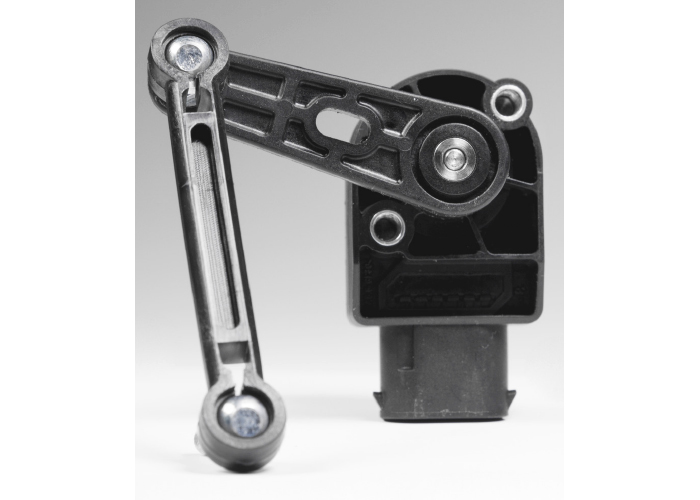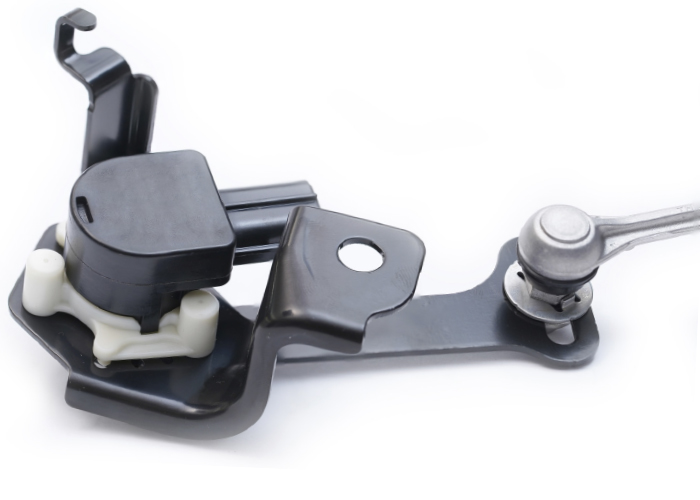Ride-height sensors not only measure the position of the suspension, but also the rate of movement. They are supplied with a voltage of around 5 volts. The signal voltage is changed as a magnet moves past a coil. Most sensors have three wires — ground, power and signal.
Internally, it is difficult to damage one of these sensors. Externally, the linkage that connects the sensor to the suspension arm can also be damaged. The connector can be damaged and cause a short or open and a code will be set. If one of these sensors is replaced, it must be calibrated after it is installed.
Ride-height sensors are sometimes called suspension-position or wheel-displacement sensors. The data from the sensor is used to measure the movement of the suspension. By knowing how far and fast the suspension is moving, the module can use the information to determine the size of the orifice in the dampener to control compression and rebound.
Measuring Body Movement
Accelerometers are simple devices in theory. Imagine a fishing rod mounted to a moving object like a suspension knuckle. As the object moves, the fishing rod deflects. The faster or farther the object moves, the more deflection there is in the fishing rod. An accelerometer is similar to the fishing rod, but instead of a rod, you have an almost microscopic beam mounted between fixed sensing elements. As the beam moves between the fixed elements, the “capacitance” of a circuit changes.
Accelerometers, however, do not measure distance, but rather movement, inertia and gravitational forces. When mounted to the body of the vehicle, the data can be used to see how the movements of the suspension are influencing the body.
Information from the accelerometers is coupled with data from the ride-height sensor, steering sensor and other inputs by a computer processor in a module. The module can determine if the vehicle is going around a corner or traveling down a bumpy road. With this datastream, the valving inside the dampener can be adjusted in milliseconds for the best control and ride quality.
The accelerometers on the body differ from vehicle to vehicle. Some manufacturers mount the sensors under the headlights and near the taillights. Others mount the accelerometers on the strut towers. More sophisticated systems use more than two accelerometers mounted in various locations.
Control Module
The control module for the electronic dampeners needs more than the movement of the wheels and body to determine the correct settings for the dampeners. The module uses and shares information with the anti-lock braking system, engine control module and instrument cluster. This information is typically shared on the high-speed CAN serial data bus. On some BMW 7 Series models, the information is shared on the fiber-optic Flex Ray bus.
With all this information, the module can do some amazing things with the adjustable dampeners. Problems like nosedive under braking, torque steer and understeer on FWD vehicles can be minimized. If the vehicle has air ride, the volume and pressure inside the air springs can also be tuned along with the valving in the dampeners to optimize ride quality and control.
















